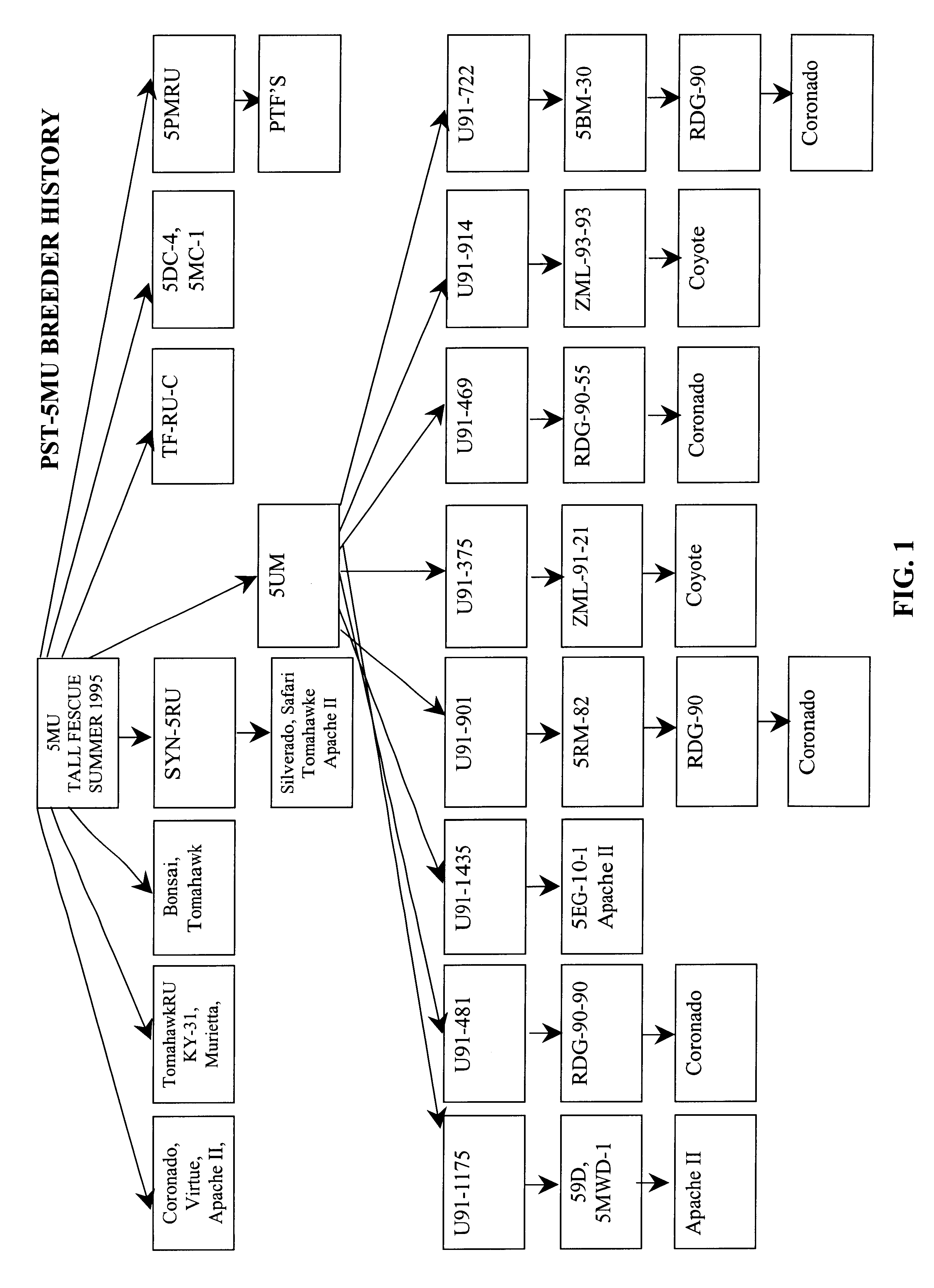Glyphosate tolerant fescue grass variety
a fescue grass and glyphosate technology, applied in the field can solve the problems of low resistance to glyphosate herbicides, lack of durability of tall fescue grasses, and low resistance of weeds to emergent glyphosate herbicides
- Summary
- Abstract
- Description
- Claims
- Application Information
AI Technical Summary
Benefits of technology
Problems solved by technology
Method used
Image
Examples
example 2
Seed Deposits
Seeds of the tall fescue variety Tomahawk RT (experimental code PST-5MU) were deposited with the ATCC (Manassas, Va.) on Dec. 18, 2000 under accession number PTA-2815. The variety is also maintained at, and available from, Pure Seed Testing, Inc., P.O. Box 449, Hubbard, Oreg. 97032.
example 3
Description of Plants
The following growth characteristics were observed for Tomahawk RT plants that were approximately one or two years old, grown in seeded rows near Hubbard, Oreg. Variations on these measurements may be observed for plants of differing ages, grown in other locations and / or under different prevailing weather conditions.
Additionally, the information provided below relating to turf quality ratings (seasonal density, genetic color, and leaf texture) and disease resistance (leaf spot) is derived from various turf trials. These data are expressed in numbers ranging from 1-9, with 1 representing low turf quality or low disease resistance and 9 representing desirable high turf quality and no disease.
The Tomahawk RT variety is additionally characterized by the following results from various trials.
The mean turf quality ratings for the Tomahawk RT variety in a tall fescue turf trial that was seeded in the fall of 1995 near Hubbard, Oreg. were 5.1 in 1996, 5.5 in 1997, 6.0 i...
example 4
Glyphosate Tolerance Characteristics
The following tables show examples of field trials in which the glyphosate resistance characteristics of the Tomahawk RT variety were examined and compared to currently used tall fescue grass varieties. Grasses were seeded in the fall of 1998 near Hubbard, Oreg. and rated between November 1998 and September 1999.
Table 2 shows comparisons of the turf quality of the Tomahawk RT variety with other tall fescue varieties in the absence of glyphosate herbicide (as an unsprayed check). The score ratings are based on a scale of 1 to 9, typical of rating scales for turf grasses (9=ideal quality; no disease).
Table 3 shows comparisons of the turf quality of the Tomahawk RT variety with other tall fescue varieties in the absence of glyphosate herbicide and the damage to the grasses produced by application of a commercial formulation of glyphosate sprayed at the rate of 1 / 2 pint (8 oz.) per acre on Mar. 2, 1999. The score ratings are based on a scale of 1 to 9...
PUM
 Login to View More
Login to View More Abstract
Description
Claims
Application Information
 Login to View More
Login to View More - R&D
- Intellectual Property
- Life Sciences
- Materials
- Tech Scout
- Unparalleled Data Quality
- Higher Quality Content
- 60% Fewer Hallucinations
Browse by: Latest US Patents, China's latest patents, Technical Efficacy Thesaurus, Application Domain, Technology Topic, Popular Technical Reports.
© 2025 PatSnap. All rights reserved.Legal|Privacy policy|Modern Slavery Act Transparency Statement|Sitemap|About US| Contact US: help@patsnap.com

